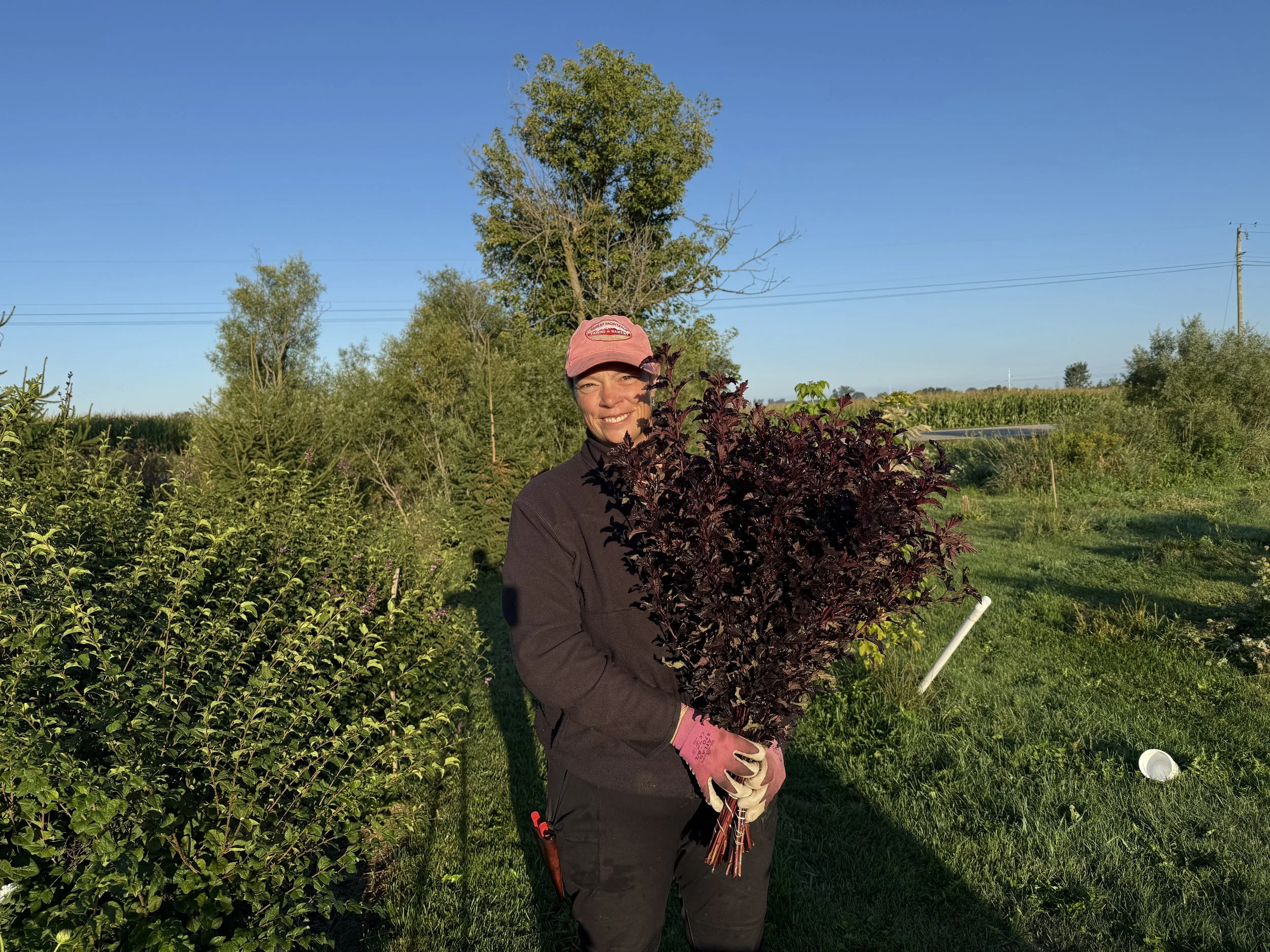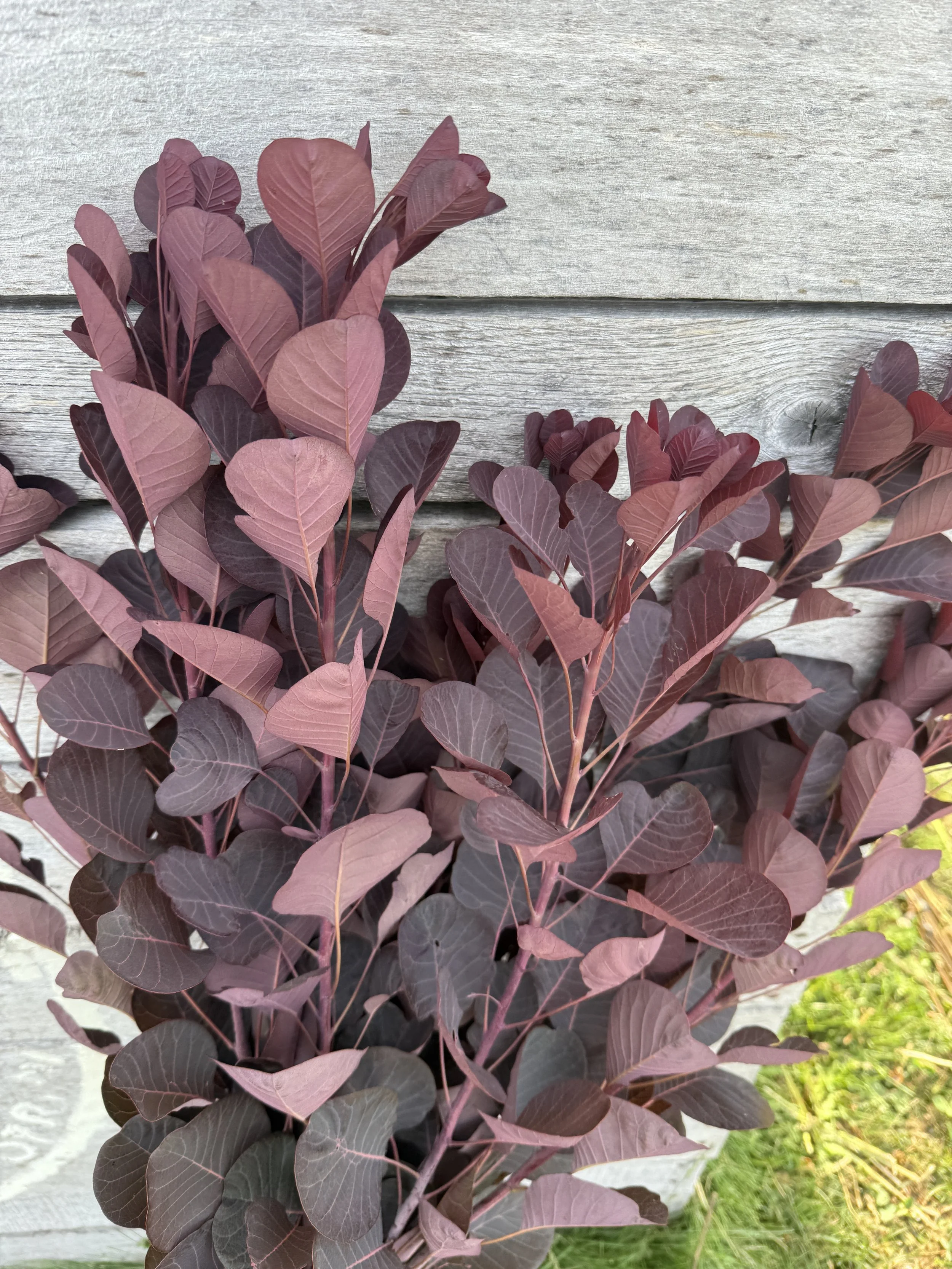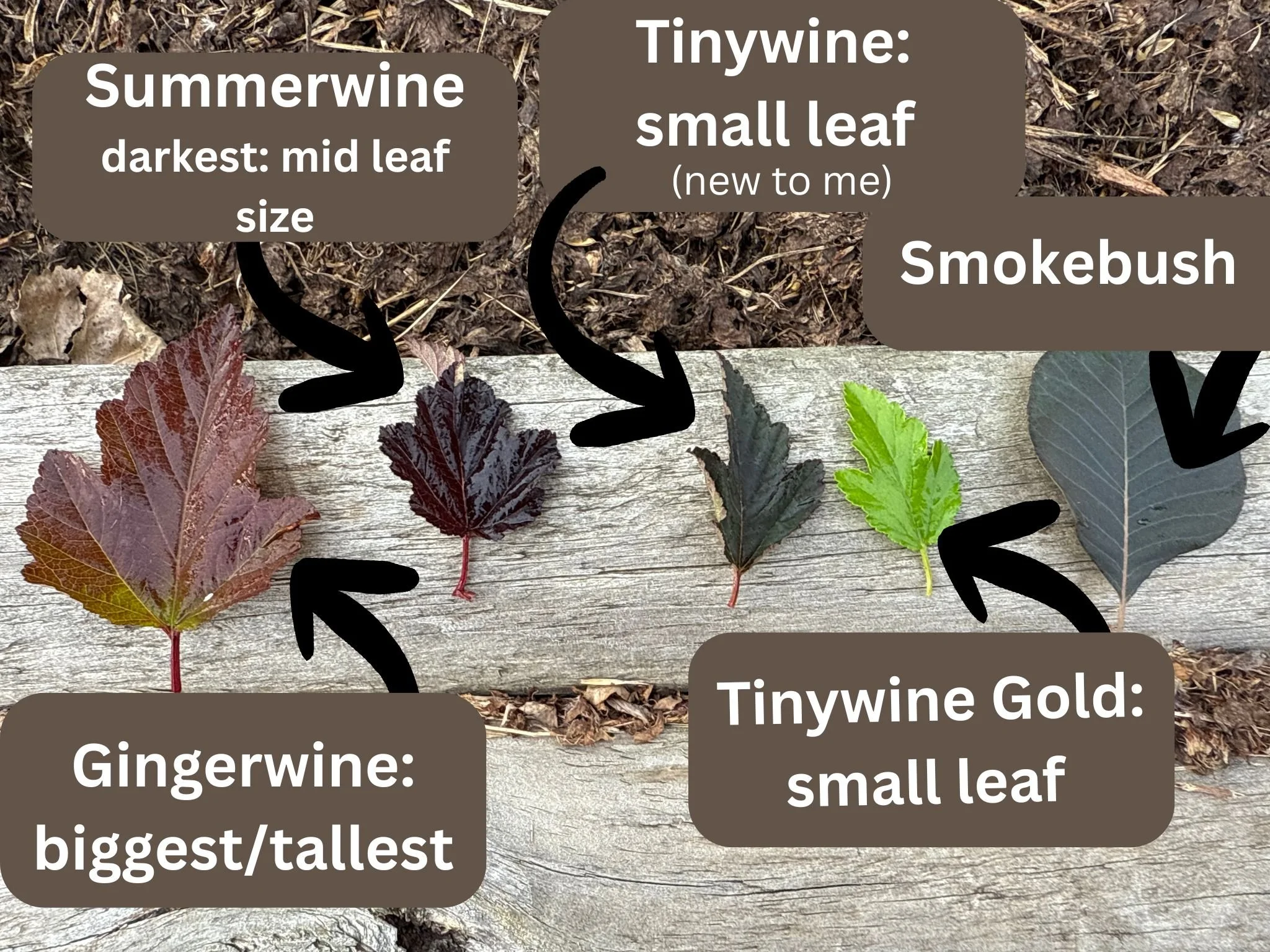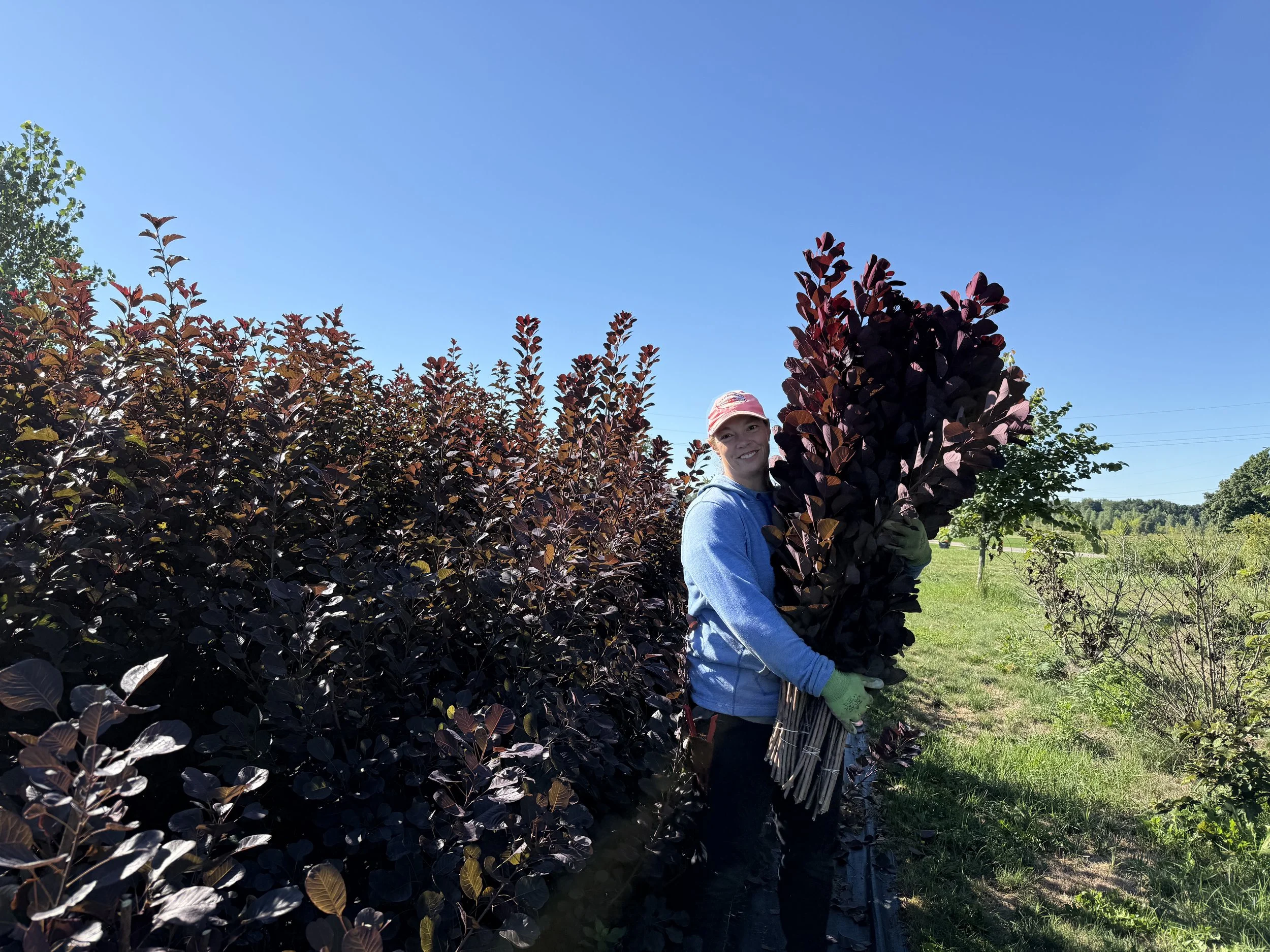Why I Grow Ninebark and Smokebush for Profitable Florist Sales
When I think about what’s had the biggest long-term payoff on my flower farm—not just in stems, but in strategy—it’s woody shrubs. In my region, ninebark and smokebush have been the backbone of my woody shrubs, and they were part of my first investment. These two shrubs have become some of the most productive, reliable, and profitable plants I grow. Plus, they help set my farm apart from others. It all started in 2022 after a year of planning and research.
I farm in Dorr, Michigan, zone 6a, and this is my sixth season growing cut flowers. I’ve built my business slowly—I've added 2 more babies, countless bunches, and lots of learning over the past 6 years.. I believe in long-term gains over quick wins. That’s why I chose woody shrubs instead of tulips in 2022—and I’d make that choice again in a heartbeat.
Why I Chose Woody Shrubs Over Tulips
Back in 2022, my budget only allowed me to choose one big investment—by big I mean $1K: either tulips or woody shrubs. I went with shrubs—and I’m so glad I did. Those tulips might’ve brought in a little income, but my shrubs? They’ve paid me back in hundreds and hundreds of stems, week after week. And they’ll keep doing that for years to come.
Want to start selling your flowers to florists — but don't know where to begin?
Grab my FREE guide with tips to help you build real and lasting relationships with florists so you can confidently sell your flowers.
Join the 750+ flower farmers who’ve already downloaded it.
What Makes Ninebark & Smokebush So Valuable
Foliage sells. If you’re selling to florists (especially wedding and event florists), is essential. Ellen Frost, a florist at Local Color Flowers, often says half of what she buys is foliage.
High yield. Once established, each plant gives me dozens to hundreds of stems. I’ve harvested hundreds this season alone.
Resilient growers. These shrubs are drought-tolerant once established, pest-resistant (Japanese beetles mostly leave them alone!), and adaptable to different soils.
Unique texture and color. Smokebush especially can add a soft, smoky look that florists love. And ninebark offers beautiful color variation with chartreuse, burgundy, and deep wine tones.
Basic Growing Tips
Sun & soil: Full sun and well-drained soil work best.
Tight spacing: I plant mine just 18"–24" apart—yes, this is super tight spacing, but you are cutting them back every season.
Sources: I’ve bought from Spring Meadow (Grand Haven, MI) and Farmer Bailey. Spring Meadow lowers their order minimum in August!
How Many to Plant
This is a question I get all the time—how many shrubs should I start with? Personally, I plant in groups of 16 because that’s the minimum tray size I can order from Spring Meadow. But if you’re farming on a scale like mine and plan to sell to multiple florists, I would plant at least 10 of any given variety. In fact, 20 is a much better starting point. If you are growing on a smaller scale either buy them on sale from a local nursery or split a tray with another local farmer.
In 2024, I expanded significantly—adding over 1,000 more shrubs to my farm, including a lot more smokebush and ninebark. My original planting in 2022 included 16 smokebush and 16 of each of three different ninebark varieties totaling 48 shrubs. In that 2024 expansion, I added more of both, nearly tripling my initial planting.
Favorite Varieties I Grow
Ninebark:
Tiny Wine Gold (no longer available at Spring Meadow, but I love its chartreuse color and tiny leaves)
Tiny Wine (dark version, similar structure)
Summer Wine (deep burgundy, medium leaf)
Ginger Wine (tallest and largest leaf)
Magical Spring Fire (golden-toned)
Smokebush:
Magical Torch (produces smoke on first-year wood!)
Winecraft Black (dark leaves, dramatic presence)
Winecraft Gold (chartreuse—still maturing but promising)
Harvesting & Post-Harvest Tips
Don’t cut too early in the season. Wait until stems are mature and woody—usually mid-July and into August for the best vase life.
Hydration matters. I harvest early in the morning, dip the stems in Quick Dip, and then place them in a hydrator solution from Chrysal. Then I put them in the cooler as soon as possible.
Sort by length. I sell smokebush in two lengths: 18–24" for bouquets, and 36"+ for larger installations. Most of my ninebark goes out around 24–36" long depending on the variety. The Ginger Wine ninebark is super tall and robust.
Selling to Florists
My florists regularly order ninebark and smokebush. Shop florists need staple foliage every week. But, wedding and events take large orders. One wedding order included 17 bunches of Summer Wine ninebark. Another event called for 30 bunches! When you grow high-quality foliage consistently, florists remember—and keep coming back.
Challenges to Keep in Mind
Time to Maturity. Ninebark starts producing a few stems in year one, but really takes off by year two and three. Smokebush is a little slower to establish but worth the wait. By year two, smokebush typically gives you a few stems, and then by year three the plants are more robust, producing 12–15 stems per plant.
Browning Leaves. In drought years, I’ve seen browning in late-season ninebark. It's a good reminder to monitor stress and harvest selectively.
Powdery Mildew. This can be a problem, especially in warmer climates. I don’t have issues with it personally, but it can be a challenge for others. Thankfully, newer varieties are bred to be more resistant.
Pruning is Key. I won’t go deep here, but I did a full video on how I prune my shrubs in late winter. [Check it out here.] Proper pruning = better stems.
Why Woody Shrubs Set My Farm Apart
In a region full of flower farms, ninebark and smokebush have become one of the things that set my farm apart. They’ve helped me grow in volume and reliability—two things that a very important for florist sales and long term relationships.. And when I look ahead to the future of my farm, these shrubs are part of the plan. I like to say that the woody shrubs are my retirement plan. In the summer of 2024, I added another 1,000 shrubs to my farm, including more smokebush and ninebark.
If you’re in year 1–2 and wondering what to plant for long-term florist sales, I highly recommend woody shrubs. They’re low maintenance, high payoff, and full of potential. See full video on YouTube by clicking below.
Key Takeaways:
Foliage is essential for florist sales.
Ninebark and smokebush produce hundreds of stems per season once mature.
Plant tightly and prune annually for best results.
Establishing takes time—but it’s worth it.
Hang in there, friend. Flower farming is a wild ride, but it's worth it in the long run. This is not a get-rich-quick scheme, but with intentional investments into long-term gains, I believe it is profitable and sustainable.
Got a favorite ninebark or smokebush variety? Let me know—I’d love to hear what’s working for you!



